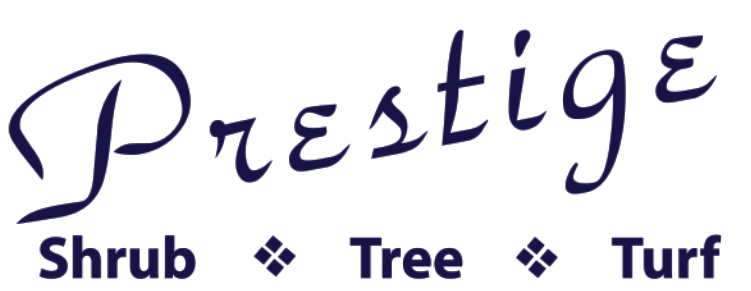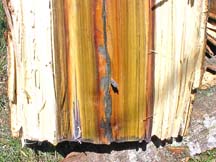 It was once thought that the major damage caused by lightning was related to the production of steam generated by the intense heat of the lightning strike. Though there can be some damage related to “micro-steam explosions” in the wood and some internal scorching, as can be seen in this photo, the major contributor to the structural damage is actually the effect of the sound wave produced by the lightning as it courses through the tree. This sound wave can travel at 10X the speed of sound and can cause major disruption to the cells of the tree. (1)
It was once thought that the major damage caused by lightning was related to the production of steam generated by the intense heat of the lightning strike. Though there can be some damage related to “micro-steam explosions” in the wood and some internal scorching, as can be seen in this photo, the major contributor to the structural damage is actually the effect of the sound wave produced by the lightning as it courses through the tree. This sound wave can travel at 10X the speed of sound and can cause major disruption to the cells of the tree. (1)
Lightning is comprised of two parts. Ground streamers are generated at the top of trees (substitute here, person, pole, house, etc.) and the cloud leaders move downward from the clouds or charged atmosphere. When they meet we see the flash and hear the boom of thunder. “Each strike of lightning can reach more than five miles in length, and (at the instant of) connection produce temperatures greater than 50,000 degrees Fahrenheit and an electrical charge of 100 million volts.” (2)
Because multiple connection points can be involved in a lightning strike multiple trees can be affected by a strike. Consequently, multiple trees can be damaged though the damage is not readily visible. Ambrosia beetles and bark beetles readily attack trees that have been damaged by lightning causing further stress and possible death of the tree.
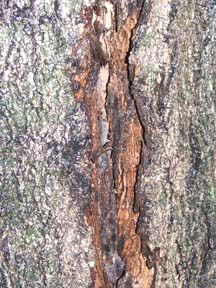 Initial visible damage usually consists of a strip of bark that was knocked off the tree and possibly sections of dead leaves in the canopy. As time progresses, depending upon the amount of damage the tree incurred, you may see severe dieback in the canopy which eventually leads to the wood becoming weak and unstable resulting in failure of the upper branches or trunks.
Initial visible damage usually consists of a strip of bark that was knocked off the tree and possibly sections of dead leaves in the canopy. As time progresses, depending upon the amount of damage the tree incurred, you may see severe dieback in the canopy which eventually leads to the wood becoming weak and unstable resulting in failure of the upper branches or trunks.
Currently, the accepted course of action is to 1) assess the tree for visible structural damage 2) treat the tree preventively to reduce the level of Ambrosia beetle or bark beetle activity 3) Keep the tree adequately watered (1″ per week, one time per week but above 95 degrees two inches per week, two times per week) as lightning damaged trees lose water rapidly through the damaged tissue and are unable to stem this loss effectively. 4) do not fertilize the tree for a period of one year after the strike 5) monitor the tree for deterioration in the canopy or any branch breakage 6) if the tree survives longer than a few months reassess the tree the following spring after full leaf expansion.
The bad news is that, depending upon the severity of the strike and damage done, the trees usually die within 3 years. If the trees live longer they must be constantly monitored for deterioration since they have been damaged and will never recover fully.
Below is shown a pine that was struck by lightning in June and by October was essentially dead.
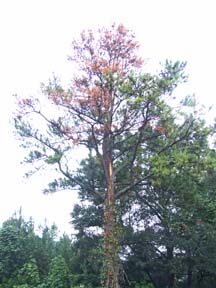
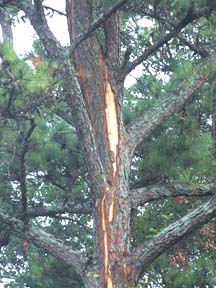
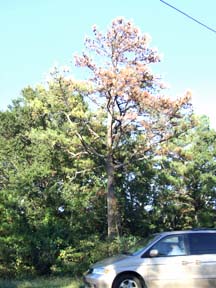
1 (Lightning Damage Process & Risk Assessment in Trees; Dr. Kim D. Coder, Professor of Tree Health, Warnell School of Forestry & Natural Resources)
2 (from, Understanding Lightning and Associated Tree Damage by, Wayne K. Clatterbuck, Associate Professor Forestry, Wildlife & Fisheries University of Tennessee, David S. Vandergriff, UT Extension Urban Horticulture & Forestry, Kim D. Coder Professor, Silvics/Ecology Warnell School of Forest Resources The University of Georgia).
« Back to Glossary Index